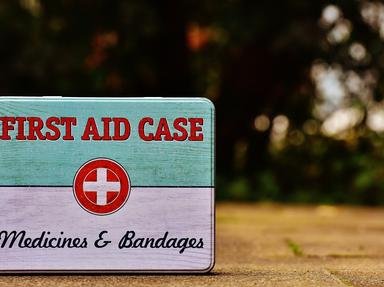Quiz Answer Key and Fun Facts
1. American Heart Association CPR guidelines were amended in 2005. The new changes focus more on high quality compressions instead of rescue breathing.
2. What does the "A" stand for in the ABC's of CPR?
3. You are out shopping at the mall with your 73 year old neighbor when she suddenly collapses. You should direct someone to bring the AED (automated external defibrillator) immediately, in case it is needed.
4. Most cardiac arrests in children are a result of respiratory arrest.
5. The first thing you should do when the AED (automated external defibrillator) arrives is check the batteries.
6. When you are checking to see if an unresponsive victim is breathing you should look, listen and feel. You are looking for the rise and fall of the victim's chest, listening for breathing and feeling for the victim's breath on your cheek.
7. In an unresponsive adult which site is recommended for checking for a pulse?
8. What is the rationale for limiting a pulse check to ten seconds?
9. What does DNR stand for?
10. What is the name of the position you should place the victim in, once the pulse and respirations return?
Source: Author
gizabeth1995
This quiz was reviewed by FunTrivia editor
crisw before going online.
Any errors found in FunTrivia content are routinely corrected through our feedback system.


